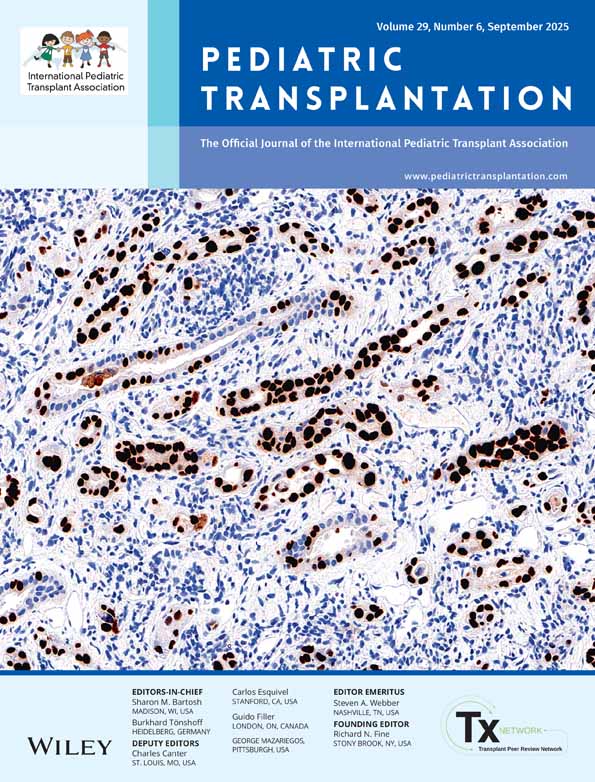Effect of treatment with prostaglandin E1 and N-acetylcysteine on pediatric liver transplant recipients: A single-center study
Abstract
Abstract: Prostaglandin E1 (PGE1) and N-acetylcysteine (NAC) have been used as single agents to decrease reperfusion injury and improve outcome after solid-organ transplantation (Tx). We hypothesized that combined treatment with NAC and PGE1 would be safe and reduce reperfusion injury. We therefore carried out a pilot study to assess the safety of this drug combination and gain information regarding the efficacy of treating pediatric liver transplant recipients with NAC and PGE1. The pilot study took the form of an open-label study incorporating 25 pediatric liver transplant recipients (12 children in the treatment group and 13 children as controls). NAC (70 mg/kg) was given intravenously over 1 h following reperfusion and then every 12 h for 6 days. PGE1 (0.4 mg/kg/h) was given as a continuous intravenous infusion for 6 days, starting after the first NAC dose. The primary outcome was the safety of combined treatment with NAC and PGE1. Patient survival, graft survival, allograft rejection within the first 90 days after Tx, peak post-transplant serum alanine aminotransferase (ALT) concentration, post-transplant length of hospitalization, and post-operative complications were secondary outcomes. Post-operative complications occured at similar rates in both control and treated groups. No complications or adverse events occured in the treated group as a result of study drugs. The 3-month patient survival rate was 100% for both groups. For the group treated with NAC and PGE1, peak serum ALT was lower and median length of stay was shorter but the differences did not reach statistical significance. The proportion of patients with allograft rejection was not significantly different between the two groups. However, rejection was more severe in the control group than in the treated group. In summary, infusions of NAC and PGE1 were safely administered to pediatric liver transplant recipients. However, a randomized controlled study is needed to determine the efficacy of treatment with NAC and PGE1.




